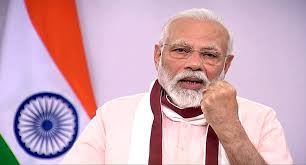Haste won’t make India a manufacturing power: Global Times

Beijing: India has been ambitious enough to become the world’s next manufacturing center after China, but in reality, it falls short of achieving manufacturing levels sufficient for its own populace.
Difficulties such as poor infrastructure, a complex policy environment, lack of skilled workers, and imbalanced industrial structures need to be properly addressed or they will become a bottleneck in manufacturing development.
In this sense, while India’s urgency to accelerate domestic manufacturing is understandable, the push may backfire on its economy if there is a mismatch between domestic industrial capability and expectations, according to an article published by Global Times on Tuesday.
Indian policymakers need to rethink whether the recent rush for local manufacturing is too aggressive and whether it really suits its own production conditions. After all, quality rather than speed is always the top priority for a country’s manufacturing sector, no matter its size.
India’s Defence Minister, Rajnath Singh announced recently that the country will stop the import of 101 types of military equipment in a bid to boost domestic weapon production and improve self-reliance in the defense sector.
Some Indian netizens questioned whether India has the capability to produce these items to a high enough quality.
Such doubts are not groundless. The delivery of India’s first domestically produced aircraft carrier, INS Vikrant, was reportedly delayed again in May by at least six months.
Starting in 2009, the pace of construction indicates deep seated issues with India’s manufacturing industry around quality assurance and efficiency.
The import ban may also be part of a recent attempt by India to facilitate a new drive named ‘Self-Reliant India.’
As the novel coronavirus pandemic has crippled businesses and consumer activities in the country in recent months, the Modi government has reportedly been working on new incentives to attract foreign investment in up to five sectors in a bid to boost domestic manufacturing.
In fact, the “Self-Reliant India” initiative can be seen as another campaign underscoring India’s eagerness to develop its manufacturing sector, itself likely derived from the unprecedented economic pressure faced by the country.

For a long time, the Indian government has put forward various plans to increase the scale of its manufacturing sector, in a bid to coax labor-intensive industries to address the unemployment problem and raise the average income level.
Such a need has become particularly acute against the backdrop of the pandemic outbreak.
Yet, any manufacturing boost is unlikely to be achieved in the short term, and import restrictions or bans have not historically been successful in reaching such goals.





